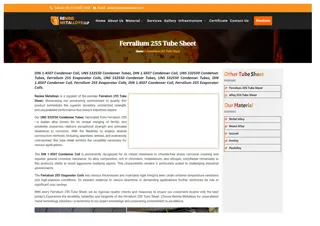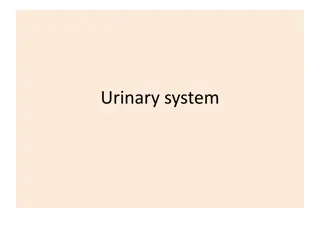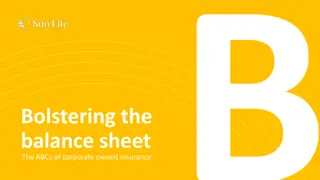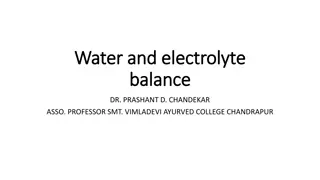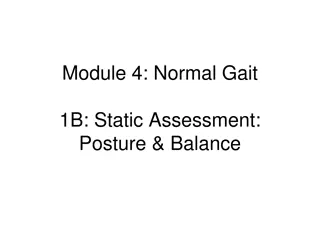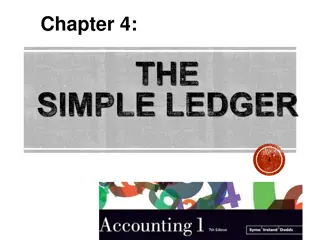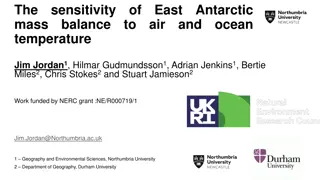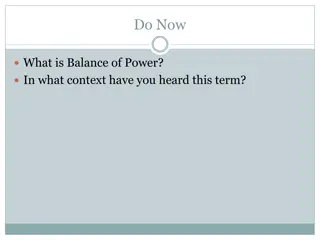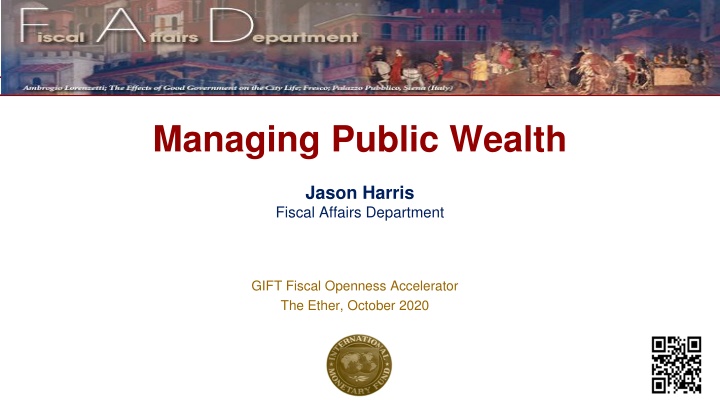
Managing Public Wealth: A Comprehensive Overview
Explore the importance of understanding public sector balance sheets in managing government finances effectively. Discover how assets and liabilities impact economic resilience, sovereign yields, and fiscal risks. Gain insights from the analysis of aggregate balance sheets of 38 countries, highlighting key components such as financial assets, debt, pension liabilities, infrastructure investments, and natural resources.
Download Presentation

Please find below an Image/Link to download the presentation.
The content on the website is provided AS IS for your information and personal use only. It may not be sold, licensed, or shared on other websites without obtaining consent from the author. If you encounter any issues during the download, it is possible that the publisher has removed the file from their server.
You are allowed to download the files provided on this website for personal or commercial use, subject to the condition that they are used lawfully. All files are the property of their respective owners.
The content on the website is provided AS IS for your information and personal use only. It may not be sold, licensed, or shared on other websites without obtaining consent from the author.
E N D
Presentation Transcript
Managing Public Wealth Jason Harris Fiscal Affairs Department GIFT Fiscal Openness Accelerator The Ether, October 2020
Managing Public Wealth Before we begin Some questions for you: I. How much debt does your government have? II. Do they have offsetting assets? How much? III. What are the largest SOEs? IV. Do they contribute to the budget, or drain it? 2
Managing Public Wealth Overview I. The Public Sector Balance Sheet II. Why Does it Matter? III. Examples IV. Conclusion 3
I. The Public Sector Balance Sheet Conceptual Framework Intertemporal Public Sector Balance Sheet Public Sector Balance Sheet General Government Balance Sheet Assets/Inflows Liabilities/Outflows Assets Liabilities Assets Liabilities Financial Assets Debt Financial Assets Debt Financial Assets Debt Increase Coverage Add Time Dimension Non-Financial Assets Non-Financial Assets Non-Financial Assets Past Non-debt Non-debt Non-debt Public Corp Assets Public Corp Liabilities SOE Assets SOE Liabilities Future Future Revenues Future Spending
I. The Public Sector Balance Sheet Move beyond debt and deficits, to provide the most comprehensive view of public finances Shed light on public assets and liabilities by bringing together existing and newly estimated PSBS data into a single source Identify the macro-economic relevance of balance sheets and their impact on sovereign yields, economic resilience and potential revenues Develop and apply a conceptual framework for assessing balance sheets to improve fiscal policy and better manage fiscal risks 5
I. The Public Sector Balance Sheet Aggregate PSBS for 38 countries Aggregate Public Sector Balance Sheet (in percent of GDP) Assets Liabilities Financial Assets 97 % GG Debt 94 % US$103 Trillion or 216 percent of GDP 195 percent of GDP Pension Liabilities 46 % Infrastructure 71 % Others 56 % Natural Resources 37 % Net Worth 21 % Others 11 % 6 Source: IMF Public Sector Balance Sheet Database.
II. Key Components New elements Accrued Pension Liabilities (Percent of GDP) Natural Resource Assets (Percent of GDP) Public Corporation Assets (Percent of GDP) Senegal Malta Uzbekistan Armenia North Macedonia North Macedonia Guatemala Armenia Uzbekistan North Macedonia Gambia, the Lithuania Mexico El Salvador Georgia Malta France Kazakhstan Kenya Japan United Kingdom Lithuania Korea Lithuania Tanzania Austria South Africa Uganda Germany Macedonia El Salvador New Zealand Mexico Portugal Canada Malta Uganda Austria United States Finland Peru Australia Kenya Albania Brazil United Kingdom Gambia, the Albania Turkey Georgia Austria United States Australia Malta Guatemala Colombia Senegal Georgia Indonesia Mexico Senegal New Zealand Armenia Mexico Finland Tunisia Albania Turkey New Zealand India United Kingdom Japan Tanzania France Peru Canada India Indonesia Lithuania Kazakhstan Germany Colombia Korea, Republic of Turkey Tunisia Uzbekistan Korea Indonesia Armenia United States Brazil Canada Brazil South Africa Russia Norway Uzbekistan France South Africa Norway Colombia Russian Federation Australia Norway Tunisia Peru India Germany Kazakhstan Finland Portugal Russia Portugal Japan 0 100 200 300 0 50 100 150 0 50 100 150 200 250 300 7 Source: IMF Public Sector Balance Sheet Database
I. The Public Sector Balance Sheet South Africa Central Government General Government Non-Financial Public Corps Financial Public Corps Consolidated Public Sector Consolidation BALANCE SHEET Total assets NA 208.3 49.6 72.3 269.0 -61.2 Nonfinancial assets NA 156.7 44.6 2.5 203.7 0.0 Fixed assets NA 55.3 44.6 2.5 102.3 0.0 Land NA 0.0 0.0 0.0 0.0 0.0 Mineral and energy resources NA 101.4 0.0 0.0 101.4 0.0 Other nonfinancial assets NA 0.0 0.0 0.0 0.0 0.0 Financial assets 41.4 51.6 5.0 69.9 65.3 -61.2 by instrument Monetary gold and SDRs 0.0 0.0 0.0 2.2 2.2 0.0 Currency and deposits 10.6 13.4 1.6 5.2 9.9 -10.3 Debt securities 0.0 0.1 0.4 27.1 13.1 -14.5 Loans 0.0 0.0 0.1 5.7 -1.0 -6.9 Equity and investment fund shares 29.5 31.0 0.3 24.6 26.3 -29.5 Other financial assets 1.2 7.1 2.6 5.1 14.8 0.0 Liabilities 55.5 56.8 49.6 72.3 117.5 -61.2 by instrument SDRs 0.0 0.0 0.0 0.8 0.8 0.0 Currency and deposits 0.0 0.0 0.0 16.5 6.3 -10.3 Debt securities 49.6 47.4 7.2 1.8 41.8 -14.5 Loans 4.9 5.4 6.1 6.9 11.6 -6.9 Equity and investment fund shares 0.0 0.0 25.8 3.7 0.0 -29.5 Insurance, pension, and standardized guarantee schemes 0.0 0.0 0.1 42.4 42.5 0.0 Financial derivatives and employee stock options 0.0 0.0 0.3 0.0 0.3 0.0 Other accounts payable 1.0 3.9 10.1 0.3 14.3 0.0 NET FINANCIAL WORTH 94.6 -5.2 -44.6 -2.5 -52.3 0.0 NET WORTH STATEMENT OF OPERATIONS Revenue Expense Net operating balance Net investment in nonfinancial assets Net lending/borrowing NA 151.5 0.0 0.0 151.5 0.0 29.3 37.2 10.4 NA NA NA 32.4 39.0 8.9 NA NA NA -3.1 -1.9 NA NA NA NA 0.4 1.8 2.4 NA NA NA -3.5 -3.7 -0.9 NA NA NA
I. The Public Sector Balance Sheet Individual country PSBS for 39 countries Public Sector Balance Sheets (Percent of GDP, 2016) 750 Total Assets Total Liabilities Net Worth GG Debt 500 250 0 -250 -500 Zimbabwe* Australia France Tunisia* Germany Uganda* India Finland South Africa United Kingdom Senegal* United States Georgia Guatemala* Armenia* Macedonia* Canada Malta* Lithuania* Norway Uzbekistan* Albania* New Zealand Tanzania* Mexico* The Gambia* Japan Peru* Austria* Kenya* Portugal* El Salvador Brazil* Turkey* Korea Russia* Indonesia Colombia* Kazakhstan 9
I. The Public Sector Balance Sheet Public Corporations Process: Identify the majors/full universe of PCs Statistical agency/govt oversight report Country team Financial database: e.g. Orbis Google Italy: Individual Public Corporation Liabilities (Percent of GDP) 25 100 20 80 % GDP Share of PC Liabilities 15 60 10 40 5 20 Rank by size/importance Size of assets/liabilities Revenue/Expenditure Top 7 or 8 tell the story focus on them 0 0 ISTITUTO LUCE-CINECITTA' SOCIETA' A MONITORAGGIO AMBIENTALE E RICERCA SOCIETA' GESTIONE AEROPORTO S.P.A. SIGLA: SOCIETA' PER IL PATRIMONIO IMMOBILIARE - CONCESSIONI AUTOSTRADALI LOMBARDE CONSORZIO PER LA RICERCA E LO SVILUPPO DI ISTITUTO TRENTINO PER L'EDILIZIA ABITATIVA - A.M.A.M. AZIENDA MERIDIONALE ACQUE MESSINA ISTITUTO POLIGRAFICO E ZECCA DELLO STATO - SPV LINEA M4 S.P.A. O IN FORMA ABBREVIATA M4 FINANZIARIA REGIONALE FRIULI VENEZIA GIULIA - PROGETTO TRADUZIONE TALMUD BABILONESE RETE AUTOSTRADE MEDITERRANEE PER LA AZIENDA MULTISERVIZI E D'IGIENE URBANA ATB AGENZIA DELLA MOBILITA' S.P.A. CON SIGLA SOCIETA' ITALIANA TRAFORO AUTOSTRADALE DEL AZIENDA PUBBLISERVIZI BRUNICO AMAIE S.P.A. ENEL SPA POSTE ITALIANE SPA UNIRELAB S.R.L. AMG ENERGIA S.P.A. INNOVATION FACTORY S.R.L ALPERIA SPA CASSA DEPOSITI E PRESTITI ASM TERNI S.P.A. PATRIMONIO DEL TRENTINO S.P.A. COTRAL S.P.A. AGESP S.P.A. DIFESA SERVIZI SPA ENAV SPA STUDIARE SVILUPPO S.R.L. HOLDING FERRARA SERVIZI S.R.L. AUTOSTRADE DEL LAZIO S.P.A. BRESCIA INFRASTRUTTURE S.R.L. CMV S.P.A. ASPEM RETI S.R.L. INNOVAPUGLIA - S.P.A. APV INVESTIMENTI S.P.A. AZIENDA VENEZIANA DELLA MOBILITA' S.P.A. SOGESID S.P.A. TRENORD S.R.L. FERROVIE DELLO STATO ITALIANE S.P.A. BUSINESS LOCATION ALTO ADIGE S.P.A. AZIENDA MOBILITA' E TRASPORTI S.P.A. Collect the financial statements Company websites annual reports Authorities provide templates 10
II. Why does it Matter? Large Assets Large Revenue Potential Distribution of Annual Returns from Public Corporations (Percent Return on Assets) Potential Revenue Gains from Improved Asset Management (in percent of GDP) 40 6 Median = 0.6 percent Current returns Potential Improvement 35 5 30 4 Percent of GDP 25 3 20 2 3 15 2 10 1 5 1 0 0 Non-financial public corporations Government financial assets Total <-4 -4 -3 -2 -1 0 1 2 3 4 5 6 7 8 9 10 >10 Source: IMF October 2018 Fiscal Monitor. 11 New Zealand case study
II. Why does it Matter? Large Assets Large Revenue Potential Distribution of Annual Returns from Public Corporations (Percent Return on Assets) 14 12 10 Annual Return on Assets (percent) 8 6 75th percentile 4 2 0 -2 -4 -6 0 25 50 75 100 125 Assets (percent of GDP) 12
II. Why does it Matter? Stronger balance sheet lower interest Source: IMF October 2018 Fiscal Monitor. 13
II. Why does it Matter? Stronger balance sheet Greater resilience Real GDP per Capita Following Recessions (in percent) Real Government Expenditure per Capita Following Recessions (in percent) 40 12 30 9 Percentage change Percentage change 20 6 10 3 0 0 -10 -3 -20 -6 0 1 2 3 4 5 0 1 2 3 4 5 Year Year Strong Balance Sheets Weak Balance Sheets Source: IMF October 2018 Fiscal Monitor. Note: Shaded area represents 90 percent confidence interval. Kazakhstan case study 14
V. Conclusion Our report shows the benefits of PSBS analysis Comprehensive view of public finances Identify & manage risks Evaluate policies Macroeconomic relevance Promotes transparency and accountability Public assets at the service of economic and social goals Accountability to citizens and creditors Next steps Start compiling balance sheets the database is public at data.imf.org/psbs Perform basic balance sheet analysis Over time, improve statistical and accounting practices 15
Thank You Public Sector Balance sheet Database data.imf.org/psbs Managing Public Wealth IMF October 2018 Fiscal Monitor www.imf.org/fiscalmonitor
Backpocket 17
III. Examples Risk The Gambia Fiscal Stress Test Gross Financing Needs under Stress (percent of GDP) The Gambia: Public Sector Balance Sheet (percent of GDP) 60 Central Government 47.3 13.4 33.9 93.5 78.4 -59.5 -46.2 Public Corporations 61.9 22.4 39.4 61.9 2.0 -22.4 0.0 Public Sector 61.0 35.8 25.2 107.2 61.4 -82.0 -46.2 2016 Stress 50 Total assets of which: Nonfinancial assets Financial assets Total liabilities of which: Debt securities Net financial worth Net worth Source: IMF staff estimates 40 30 20 Baseline 10 0 2006 Source: IMF staff estimates. 08 10 12 14 16 18 20 Back 18
Examples Asset Management New Zealand New Zealand: Public Sector Balance Sheet (percent of GDP) New Zealand: Financial Highlights Commercial Priority Companies 20 Assets 57.5 33.2 20.1 110.8 1,381.9 1,492.7 Liabilities Net Worth 7.1 50.5 12.0 69.5 1,480.0 1,549.5 50.5 -17.3 8.1 41.3 -98.1 -56.8 Social Financial Commercial Static balance sheet Fiscal Intertemporal balance sheet Source: New Zealand 2017 Investment Statement. 10 0 2013 2017 -10 -20 Total Shareholder Return (LHS) Return on Capital Employed (LHS) Net profit (RHS) Back 19
The Public Sector Balance Sheet Evolution since the crisis Public Sector Balance Sheet (Weighted average of 17 countries, percent of GDP) Net (Financial) Worth Assets and Liabilities 200 -20 45 190 -25 40 180 -30 35 Net Worth (right scale) 170 -35 30 160 Assets -40 25 $11 150 Trillion -45 20 140 -50 15 130 -55 10 Liabilities 120 Net Financial Worth (left scale) -60 5 110 -65 0 100 2000 2002 2004 2006 2008 2010 2012 2014 2016 2000 2002 2004 2006 2008 2010 2012 2014 2016 Source: IMF Fiscal Monitor, October 2018. Note: The data excludes natural resource assets and pension liabilities. Back 20
China What are we missing? Assets Liabilities Cross lending/ borrowing Valuation of non-financial assets (liquidity) Exposure to new financing vehicles and policy lending PPPs Consolidation: clarify cross lending/borrowing across institutions Back
EU Aggregate Austria, Finland, France, Germany, Portugal, UK Aggregate Public Sector Balance Sheet (in percent of GDP) Assets Liabilities Financial Assets 115.7 % Others 140.5 % 203.3 % 258.7 % Infrastructure 82.9 % Pension Liabilities 79.9 % Negative Net Worth -55.4% Debt 38.3 %





